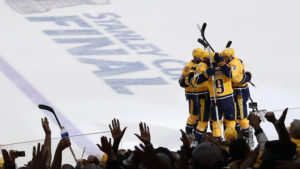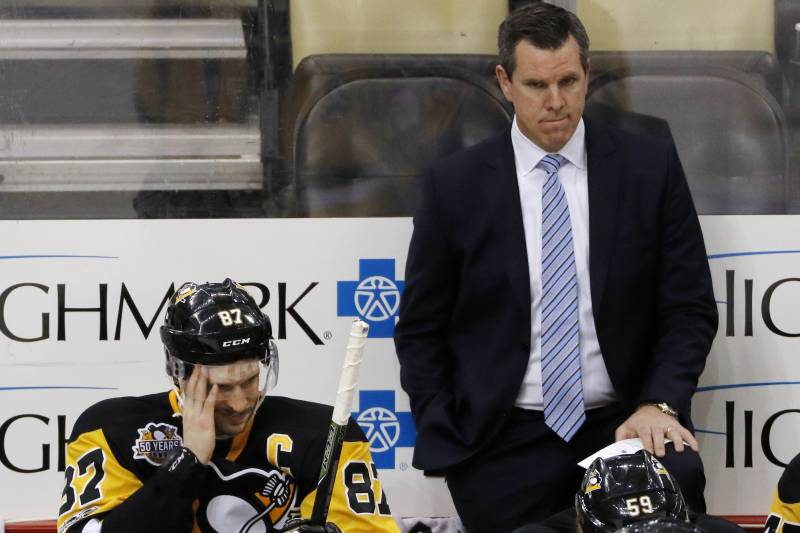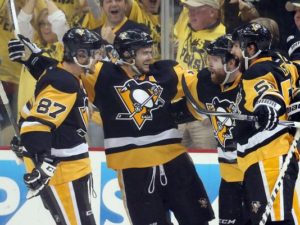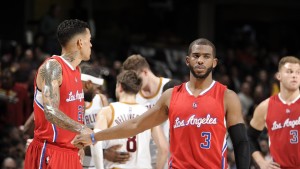
It’s probably not a secret that I absolutely love the NBA.
I’ve always enjoyed the game of basketball, particularly at the professional level. From the skill needed to play the game to the individual players and coaches, I’ve always taken a liking to the sport. Even as it’s become increasingly obvious that the need for 28 NBA teams and seven months of basketball has gone by the wayside this year, it’s still been fun to watch the game, even if you know who’s going to win most of the time. But even I can admit something about the league in 2017, particularly compared to other sports:
The NBA Playoffs have been absolutely terrible.
Many fans and experts anticipated, even going all the way back to last July, that the Cleveland Cavaliers and Golden State Warriors would meet in this year’s NBA Finals. The two teams had met in the Finals in both 2015 and 2016, with each side winning a championship. With superstar Kevin Durant joining Golden State, it became obvious that the two teams were on a collision course to meet in June once again, barring injuries or other unforeseen events. Even then, I still found the concept of a trilogy, or “three-match”, if you will, fascinating. The problem was not in the final matchup but rather in the lead-up to it.
For example, the first three rounds of the NBA Playoffs featured just two Game 7s. The first one, between the Utah Jazz and Los Angeles Clippers, took place on April 30, with the winner (Utah) earning the right to be eliminated by the Warriors in the next round. The other Game 7, held on May 15 between the Boston Celtics and Washington Wizards, earned the Celtics a place in the Eastern Conference Finals where they would be promptly smashed by LeBron James and the Cavaliers. Even when a series was competitive and interesting, you knew what the ultimate outcome would be for the winner. This was never more evident than in the Warriors’ and Cavs’ collective rampage through their respective conferences; the two teams went a combined 24-1 before meeting in the Finals, and the one combined loss happened when Celtics guard Avery Bradley hit this incredibly glitchy buzzer-beater to defeat the Cavaliers in Game 3 of the Eastern Conference Finals.
Presently, Golden State leads Cleveland two games to none in the NBA Finals and the series is quickly becoming a matter of when, not if, the Warriors are crowned champions; the Warriors’ average margin of victory in the first two games has been 20.5. The league put all its eggs in the three-match basket and may be getting what it deserves in a dud of a championship series. Part of that is because of Durant’s move to sign with the Warriors on a two-year deal last summer. His ability to do so is an outgrowth of the league’s bloated salary cap, one that ballooned from $70 million to over $94 million in the span of just one year. Because of that, the Warriors had the money to invest in Durant and the NBA had eleven months to kill before the Cavs-Warriors Finals matchup.
That thought leads us to the NHL’s Stanley Cup Playoffs.
The Stanley Cup Playoffs have been the polar opposite of the NBA’s; unpredictable, random, and, most of all, exciting. The Nashville Predators, the bottom seed in the Western Conference and, by points, the 16th and very last team in the playoffs, find themselves two wins away from a championship after tying the Stanley Cup Final at two last night in front of their raucous fans. Each conference’s top team was eliminated before the Conference Finals, and the Ottawa Senators, the 12th-best team in the Playoffs, reached the Conference Finals and took the defending champion Pittsburgh Penguins to a double-overtime Game 7 that ended with a Chris Kunitz goal to send Pittsburgh to its second straight Stanley Cup Final.
Hockey’s playoffs have been completely different from the NBA’s; while they’ve had just three Game 7s, the Stanley Cup Playoffs have had 27 overtime games and five games that have gone to two overtimes before a game-winning, sudden death goal. In reality, it’s likely the NHL Playoffs have almost always been more interesting than the NBA Playoffs, but it took a confluence of events like this year’s for all of us to realize that.
Perhaps the most appropriate symbol of the sudden crossover between the two sports is NBA legend Charles Barkley. Barkley, a television analyst who’s unafraid to speak his mind, has taken frequent shots at the NBA Playoffs for their lack of intrigue. Last month, Barkley went so far as to casually admit that he was watching the NHL Playoffs while not fulfilling on-air duties for TNT, one of the broadcasters for the NBA Playoffs. Last night, Barkley appeared on NBC’s telecast of Game 4 of the Predators-Penguins series, praised the Stanley Cup Playoffs, criticized the NBA Playoffs, and announced that Gary Bettman had invited him to Nashville for Game 4 (which, if true, is brilliant public relations by the NHL).
While he didn’t exactly tow the company line, Barkley brought up a good point with his comments. The NBA Playoffs haven’t been exciting and the Stanley Cup Playoffs have. Why would you watch a television show if you know, to a certain extent, how the series is going to end? The Stanley Cup Playoffs, on the other hand, are completely unpredictable, and while the game may not always be played at the highest level, you legitimately don’t know who’s going to win on any particular night. It’s truly worth watching just about all of the time.
When the Celtics did defeat the Cavaliers, it was considered one of the most shocking upsets in the history of the NBA Playoffs. Keep this in mind: Boston only won one game! That one win was considered one of the most stunning results in recent memory, and it demonstrates just how much dominance the NBA’s top two teams hold over the rest of the field.
As crazy as it sounds, I don’t fault Kevin Durant for leaving the Oklahoma City Thunder and joining the Warriors last summer. His decision was enabled by the expanding salary cap and he made an individual sacrifice, of both spotlight and finances, to win. I can’t find fault with that, but I can find fault with a system that allowed the Warriors to have four All-Star caliber players on their roster, as well as four of the top 20 players in the game today.
It’s not the fault of Kevin Durant or LeBron James that the NBA Playoffs have been atrocious. Both men and their teams are simply trying to win a championship and the rest of the league has not been able to catch them. But, we can point out that the NBA Playoffs have lacked the excitement and mystery that most fans, including myself, want. The championship series was supposed to save the league’s sinking ship, but those prospects now look rather bleak.
That has led us to the Stanley Cup Playoffs, a far more interesting and unpredictable affair that will end with either the Nashville Predators or Pittsburgh Penguins as champions. The fact that we still don’t know, even after Game 4 of the Stanley Cup Final, who will hoist the trophy speaks volumes to just how much we should appreciate hockey, especially during these times in sports.




